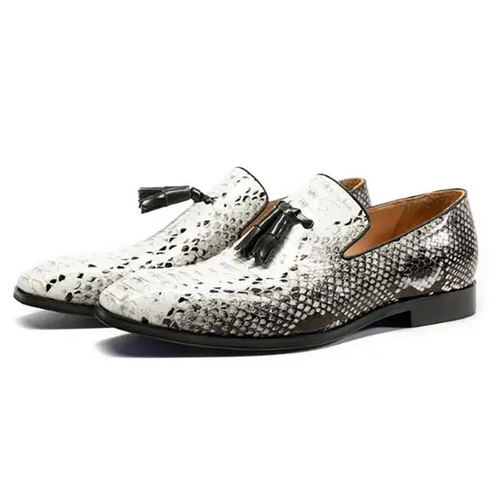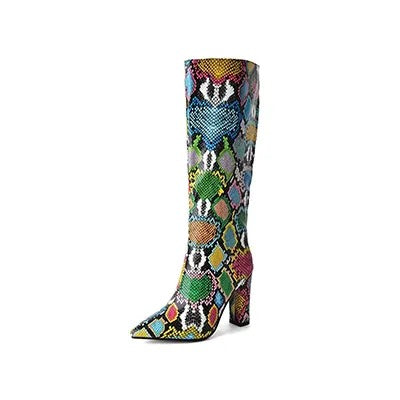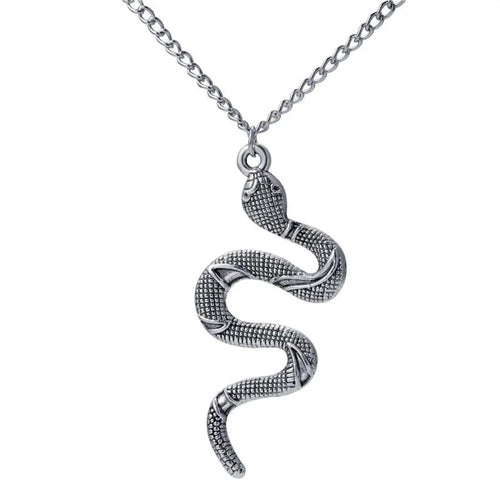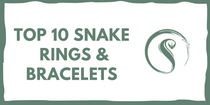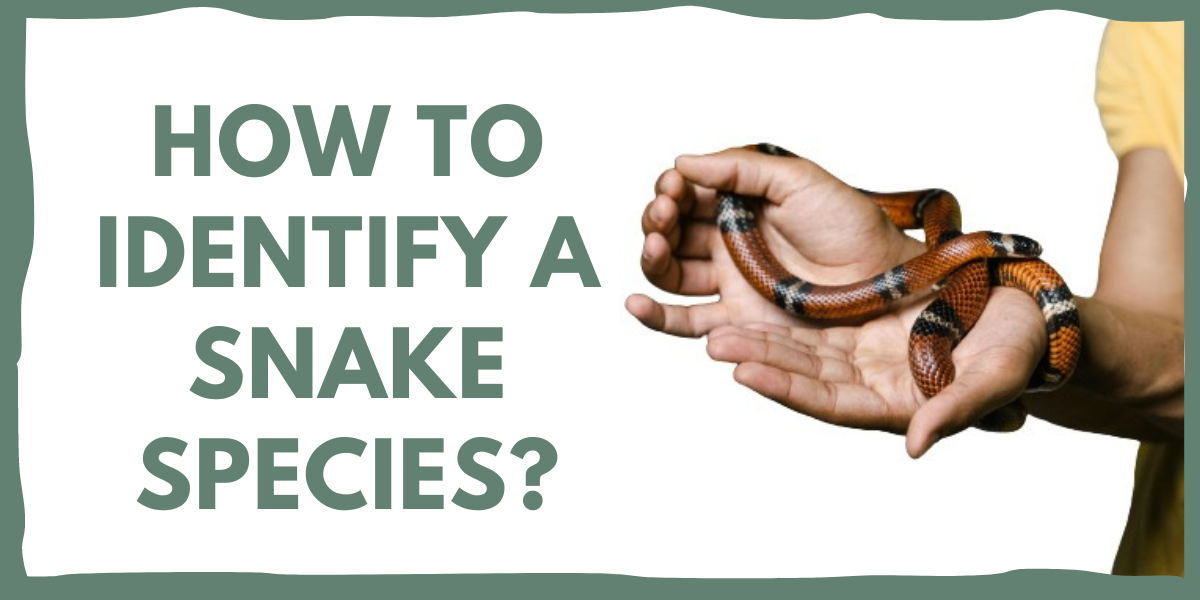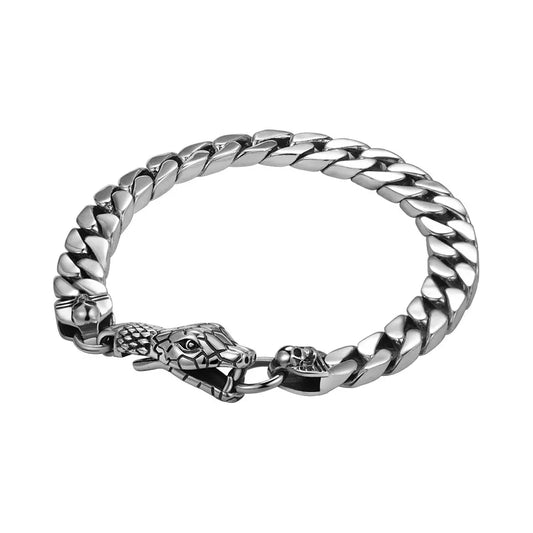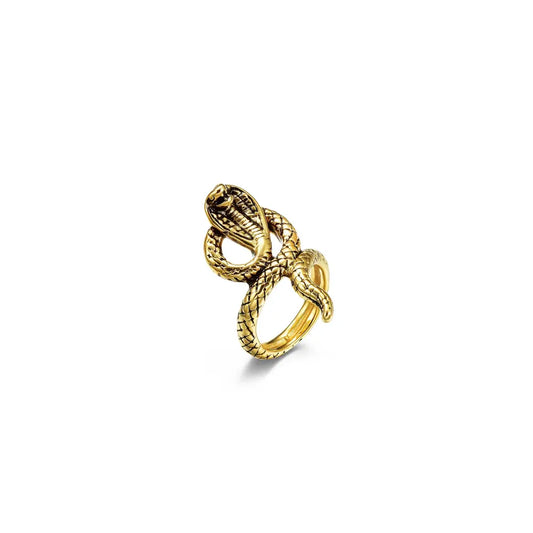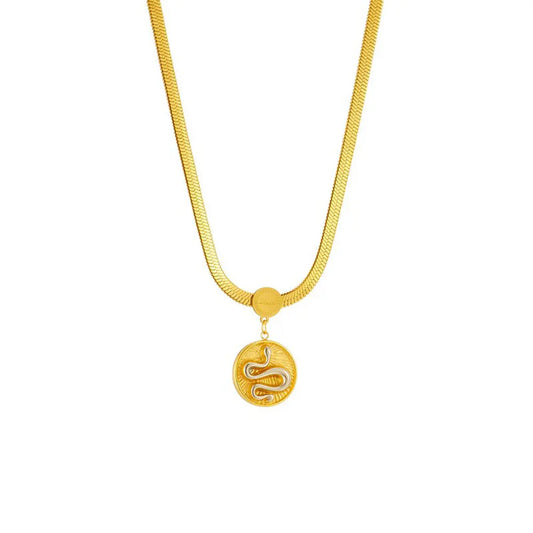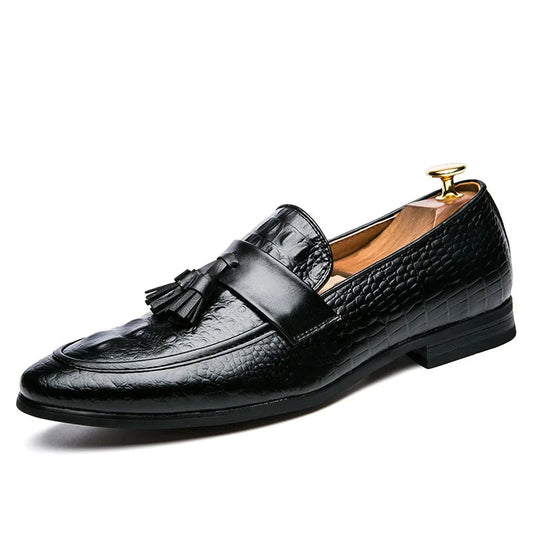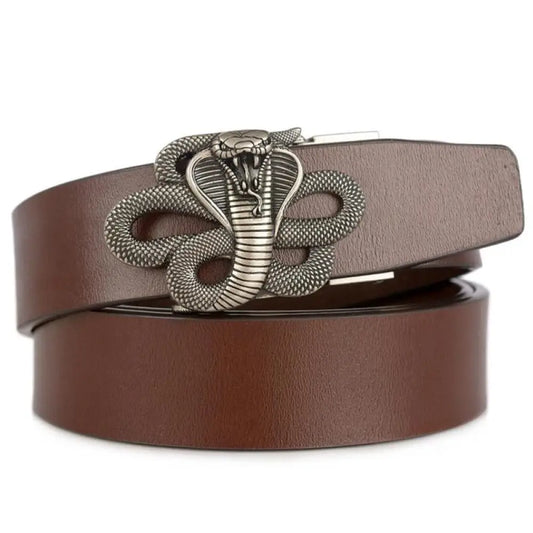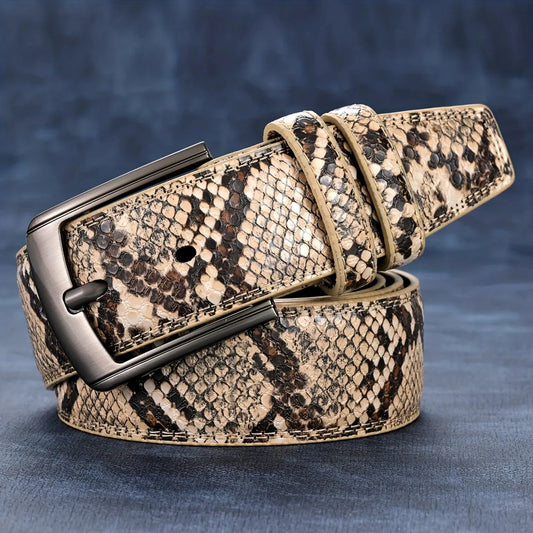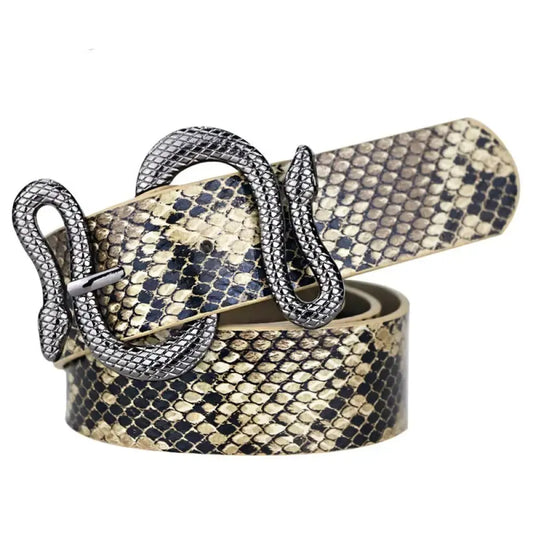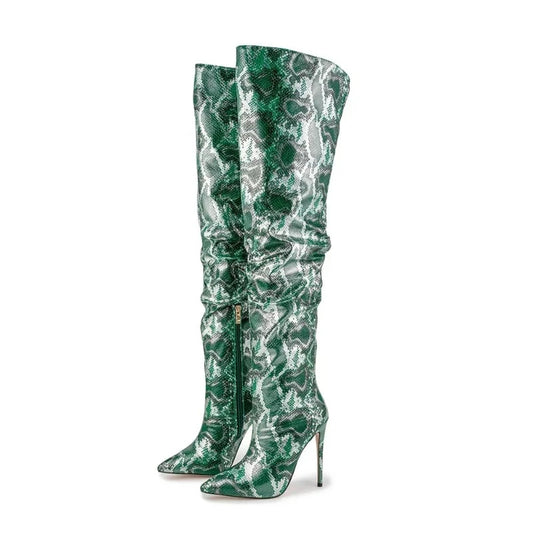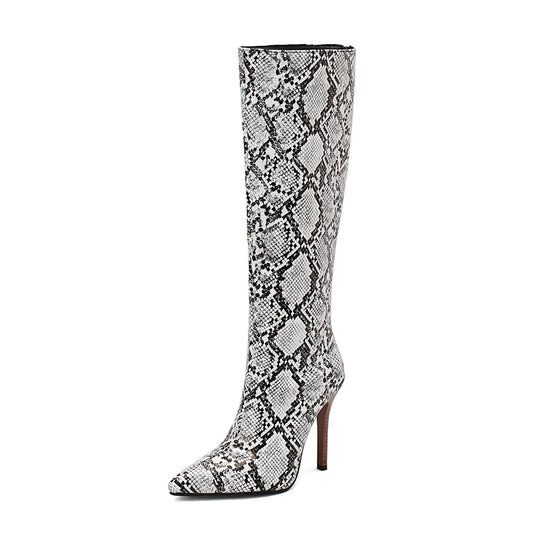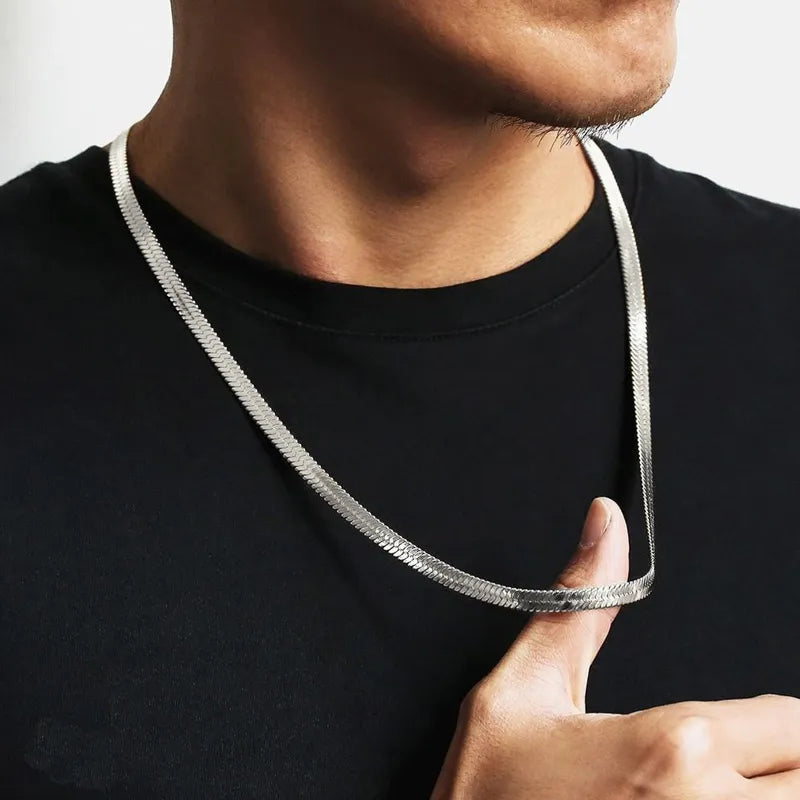You might wonder how to identify a snake? Or how to know if it is a venomous or non-venomous snake? There are 50 different species of snakes in the United States, some harmless and some deadly. ☠️ Today, the Snakes Store team decided to write you a complete and detailed article on how to identify a snake. Trust us. It will be easy!
1. RECOGNIZE A SNAKE
A) HOW TO RECOGNIZE A SNAKE AMONG ALL REPTILES?
In order to learn to identify snakes, it is important to master some basics.
Snakes belong to the class Reptilia. They belong to the order Squamata. Lizards also belong to this class. After all, they belong to the subcategory of what we now call snakes. In simple terms: Reptiles > Squamata > Snakes. Got it?
They are known for their scaly skin and egg-laying. They rely on the heat from the external environment to maintain their body temperature. Snakes are limbless predators with elongated bodies. In the United States, snakes mainly feed on rodents, amphibians, and small mammals.

They do not have external ear openings and do not have eyelids. Therefore snakes cannot blink. 😉 Their eyes are covered with transparent scales, like contact lenses. These are lost along with the skin during the molting process.
Other clues allow us to identify snakes. For example, a forked tongue. Their tongue is a valuable tool that is not only used for hunting, but also for obtaining a lot of information about the environment.
They do not smell by the nostrils like mammals, and they use their tongues to collect the smells and insert them into their mouths where the Jacobson's Organ is located. This organ helps the snake interpret different smells, guiding it to food or potential mates, but also allows it to detect dangerous situations.

B) HOW DO YOU LEARN TO IDENTIFY SNAKES?
Snakes are ectothermic, which means that they rely on external heat to maintain their body temperature 🔥/🧊. Therefore, in areas with year-round hot weather, such as tropical and subtropical regions, we can see snakes all year round. In contrast, in temperate or cold regions, snakes are only active during the hottest months. In some areas, snakes hibernate for several months of the year.
Snakes live in many habitats, such as forests, woods, fields, meadows, mountains, grasslands, riparian areas and several different natural environments 🌲. Some reptiles also live in fields, pastures, and around buildings in rural areas. Some species even live in urban areas.
If you are looking for serpents, consider searching some of the habitats mentioned above 🔍. Look especially in these kinds of places:
- Wood chips or bark on the ground
- Boulders
- Under big chunks of natural debris
2. IDENTIFY A SNAKE
A) HOW TO IDENTIFY A SNAKE?
Snake identification can be easily achieved by breaking it down into key points. These points are aspects of a snake's appearance that make it unique as a group or species. There are a series of key points to remember when identifying snakes 📄. It consists of three primary factors and five secondary factors.
MAIN FACTORS TO IDENTIFY A SNAKE
- The body shape is the snake thin, long, short, thick, ...?
The first characteristic that we notice when observing a snake. It's the form of its body. Snakes are classified into three categories: small, medium, and large. Once the length is determined, the width of the snake is also examined. If possible, the actual dimensions should be collected.
- The shape of the head: Is the head shaped like an arrowhead or oval? Are there any heat pits on the snake's head? Is the snake's snout round or pointed?
Knowing whether the snake has a triangular or oval head will help identify, but is not conclusive evidence that the animal has or does not have a lethal venom. Many poisonous adders have a triangular head. But other non-venomous snakes may have the same shape when they deliberately flatten it to appear more aggressive as a warning sign ⚠️. Venomous snakes have holes called Heat Pits on the sides of their snout. These pits are used to detect their prey.

- Eyes: Are the snake's eyes big or small? Does it have Vertical Pupils(elliptical pupils), or rounded? What color are its eyes?
The pupil shape, location on the face, and eye size must all be observed to identify the ophidian concerned.
These three identifiers - length, body width, head shape, and eye characteristics - will significantly specify the Type of Species you are facing 👍.
SECONDARY FACTORS FOR IDENTIFYING A SNAKE
- Color: what color(s) is the snake's skin composed? Are the belly and the back of the snake two different colors?
- Patterns: Are there any colored patterns present on the snake's skin? What do they look like? Is the snake spotted?
The color is usually beneficial to determine the type of snake you found 🤔. Many snakes have Distinctive Patterns. These patterns are often rectangular with darker edges. If a diamond pattern is located on the snake, the color of that pattern should also be noted. Spots are patterns without symmetry.
Scales: What is the texture of the scales, rough or smooth? Do any of these scales have keels (rising lines running lengthwise through the scale)? How many rows of scales are there on the snake's skin and belly?
Venomous snakes have only one row of scales on their belly, while non-venomous snakes have two.
- Rings: Does the snake have colored bands that completely encircle its body?
- Stripes: Is the serpent striped lengthwise?
Seldom the distinction within an inoffensive snake and a mortal rattlesnake. Is just one ring of color 😮. The most obvious example is the coral snake and the false coral snake. The ring patterns appear as stripes across the entire width of the snake.

Other identification factors can be used, such as the shape of the tail (with or without rattle), or the particular arrangement of the scales. But these factors are only beneficial for specialists to precisely classify species and subspecies among themselves.
WHAT TO DO WITH THAT INFORMATION?
Once you have gathered all the information, a guide to local species will help you refine your identification list. The characteristics identified will help you identify one or more species. Be careful because some snakes are almost identical. To differentiate them, you can use their natural habitat 🏡.
If a snake cannot be recognized solely by its appearance, then the species' habitats are relevant. Some snakes like the rocky ground, while some like sand. Some serpents only eat specific animals or are only found at certain times of the day 🌖. You can't find snakes everywhere.
Thus, having a good knowledge of the local area will be of great help if you wish to identify a snake yourself. When identifying snakes in the wild, it can be beneficial to keep at least one Naturalistic Diary 📝. The information you record in this journal can then be used later to help you find other snakes and learn more about them and their environment.
3. HOW TO RECOGNIZE A VENOMOUS SNAKE?
A Venomous Serpent is a snake that uses its venom to neutralize or kill its prey. 🐍
Ther's no perfect method to determine if a snake is venomous 🤷♂️. There is almost always an exception to the rules. However, to classify venomous and non-venomous snakes, this is done exclusively by analyzing the snake's morphology.
There are very some facilities that can be practiced to determine the toxicity of a snake. The only effective one is the pupil shape 👁️. However, be careful: while all snakes with slit-shaped pupils are venomous, not all venomous snakes have the slit-shaped pupil. This Eye Analysis of a snake's eyes is often difficult to establish, as it is necessary to get very close to the snake to make a decision.

Experts use an exact system to classify and recognize a serpent once it has been found: this is the identification process we just presented! Many experienced experts can distinguish a reptile by its visual appearance alone 👌 . Nevertheless, for the rest of the population, the step-by-step identification process is the most practical.
Remember: all snakes have roughly triangular heads, and most have colors and patterns on their skin. So those clues will not help you much. When in doubt, leave that snake found under a rock alone 😅! If accidentally come face to face with a poisonous viper, its venom could endanger you. If you want to know more about Snake Venom, we invite you to read our article on the subject!

There are exceptions to all the rules involving venomous snakes. The two most well-known are the Black Mamba and the Coral Snake. The Coral Snake is one of the deadliest snakes of all with its neurotoxic venom that attacks the nervous system. However, it has none of the characteristics indicative of danger in snakes 😕. He has a rounded head and round pupils. This serpent is much more colorful than other snakes and is much less common. There is a trick to check that you face a Real Coral Snake: red touches black, it's safe. Red touches yellow: don't get too close!

You don't have to live in a tropical country to be at risk from a poisonous snake. In our garden, as on a forest walk, it is possible to cross this often disparaged animal path. Knowing how to distinguish a venomous animal from a less dangerous one can be useful.
The snake is a reptile that is particularly feared by humans, but this fear is often caused by a lack of information and the spread of bad images. For example, in Kentucky, of the 33 species found, only four are poisonous, and those found in urban areas are harmless or even beneficial to humans because they feed on rats or other rodents. However, how can we recognize venomous snakes from those that are harmless?
First of all, non-venomous snakes live near urban or rural areas. On the other hand, Venomous reptiles lived far away from the population and retreated in wetlands such as swamps or rocky areas. However, their environment is regularly subject to severe degradation. These dangerous species, which normally stay away from the population, are gradually coming closer because they are confused.
Furthermore, it is easy to distinguish between poisonous and harmless snakes by specific features. The pupils of non-venomous snakes are round and black, while those of venomous snakes are elliptical, like those of cats. Venomous snakes also have pits (or infrared sensing) on either side of the head, between the eye and the nostril. These allow them to perceive the body heat of their prey. Harmless snakes do not have these characteristics.

These elements for distinguishing between different types of reptiles can only be applied with close observation. But there are also ways of knowing whether snakes are venomous or not by keeping a distance. Venomous snakes have a triangular-shaped head, i.e., full at the back and thinner at the front. However, many harmless snakes flatten out to protect themselves, making their head look like the head of a poisonous subject.
On the other hand, one should not rely on the sounds produced with their tails, as all of them emit this characteristic noise when they are in danger, to warn their predators of an imminent defensive attack. It is better to flee in these cases than trying to guess whether the threat is significant or not. Finally, venom is not the only danger criterion to be considered. A bite that doesn't contain toxins can be equally harmful, especially if the reptile is giant. Therefore, caution is always required.

4. SNAKES IN THE UNITED STATES
The American continent is home to many species of snakes, some of which are venomous. The US has about 20 species of venomous snakes:
- The coral snake is found in the southern states between the east coast and Texas.
- The Copperhead is found in most eastern states from Massachusetts to Florida.
- The water moccasin, widely distributed in the southeastern United States, is generally found in or near water, particularly in shallow lakes, streams, and marshes.
- On the other hand, the rattlesnake is the most widespread with different species that can be found throughout the United States.
To avoid any bite when hiking in the American wilderness, it is best to be attentive to your surroundings. Although the risk of a bit is minimal, most bites occur if a hiker steps on or sits on a snake. It is therefore advisable not to stray off marked trails to make it easier to spot the reptile and to use a walking stick to warn the animal of its presence.
If you see a snake in your path, avoid it and get as far away from it. If you are bitten, call a doctor quickly.
5. TIPS FOR SEARCHING SNAKES IN THE U.S.
Snakes are a very diverse and impressive group of animals. Are you passionate about these little beasts? Very good! If you want to learn how to identify snakes, spend some time familiarizing yourself with the Identification Process. Visit zoos, pet stores, and, most importantly, go on a wild and less-wild outdoor snake hunt 🗺️! When you find some, use your sense of observation to practice your snake identification skills.
But be careful ⚠️! Don't forget that these animals are still potentially hazardous, especially if you lack experience in the field. If you find a snake, don't try to handle it and don't get too close to avoid bites. You can also have someone who is experienced accompany you on your explorations!
































































